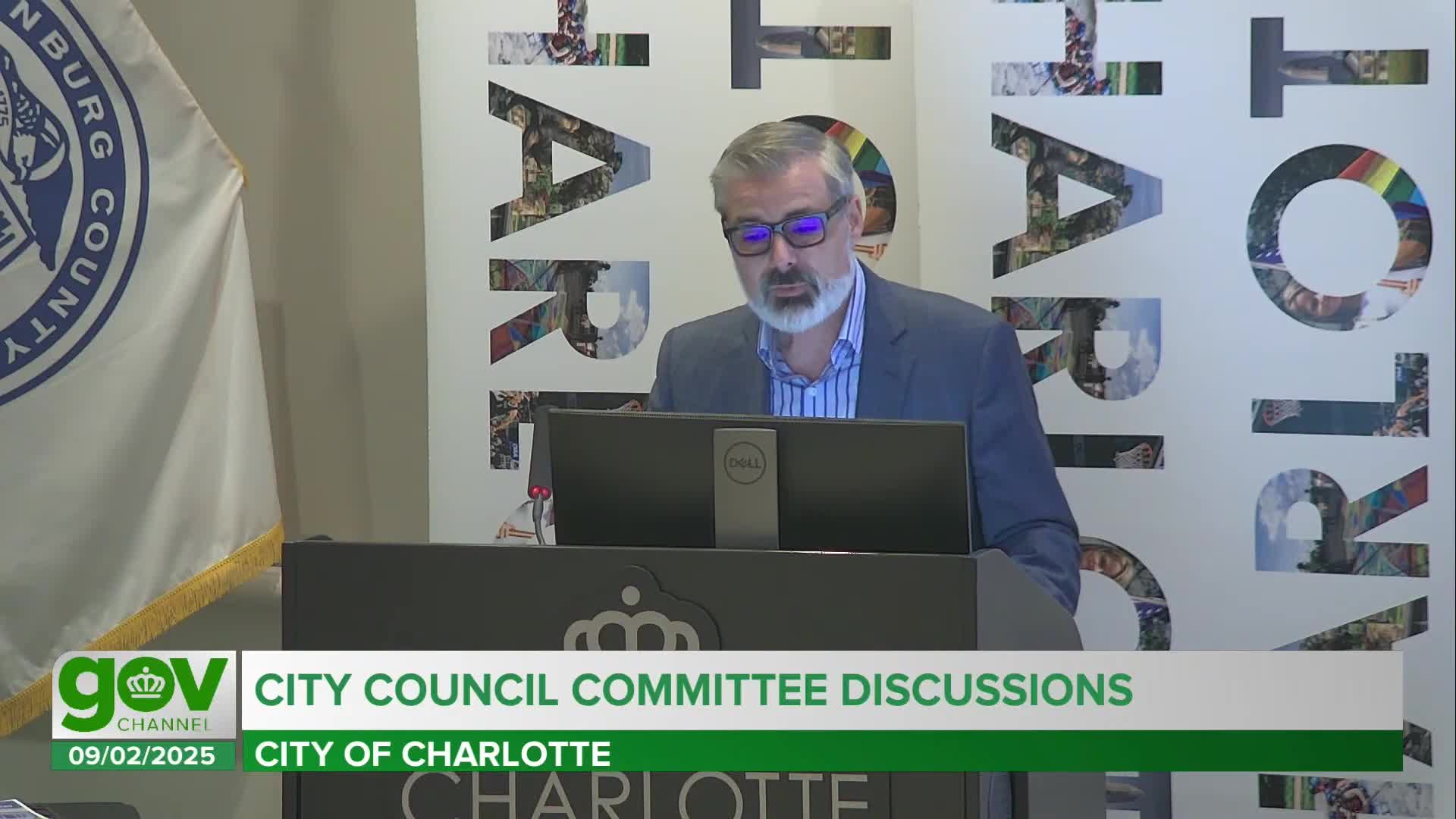Katz Transportation Implements New Transit Policing Approach and Increases Security Funding
September 03, 2025 | Charlotte, Mecklenburg County, North Carolina
This article was created by AI summarizing key points discussed. AI makes mistakes, so for full details and context, please refer to the video of the full meeting. Please report any errors so we can fix them. Report an error »

In the heart of Charlotte's city hall, a pivotal meeting unfolded as city officials gathered to discuss the future of safety and security within the Charlotte Area Transit System (CATS). The atmosphere was charged with a sense of urgency and commitment, as leaders outlined significant changes aimed at enhancing the safety of the transit system that serves millions of riders each year.
Brent Cagle, a key figure in the meeting, emphasized the organization's renewed focus on safety, introducing Eric Osnes as the newly appointed Chief Safety and Security Officer. With a robust background in transit security and federal law enforcement, Osnes is tasked with spearheading a transformative approach to security that prioritizes a transit policing model over traditional corporate security methods. This shift is underscored by a substantial increase in security funding, which has nearly tripled to $18 million, reflecting a serious commitment to safeguarding the transit system.
The meeting highlighted the ongoing evaluation of security measures, including the replacement of outdated surveillance equipment and the identification of blind spots within the transit network. Cagle noted that the upgrades would not only enhance passenger amenities but also integrate security features into the design of transit centers, ensuring a safer environment for all users.
A significant point of discussion was the perception of safety among riders compared to the general public. Surveys indicated that while riders feel relatively secure, broader community perceptions often differ, underscoring the need for continued engagement and communication about safety measures in place.
Osnes elaborated on the challenges faced by the transit system, particularly regarding mental health issues that can impact safety. He stressed the importance of collaboration with community partners to address these challenges effectively. The meeting also touched on fare collection strategies, proposing a separation of fare enforcement from security duties to allow security personnel to focus on safety while dedicated teams handle fare validation.
As the meeting drew to a close, Cagle reiterated the importance of partnerships with local law enforcement and community organizations, emphasizing that a collective effort is essential to tackle the complex issues surrounding transit safety. The discussions set a hopeful tone for the future of CATS, as officials committed to fostering a secure and welcoming environment for all riders.
Brent Cagle, a key figure in the meeting, emphasized the organization's renewed focus on safety, introducing Eric Osnes as the newly appointed Chief Safety and Security Officer. With a robust background in transit security and federal law enforcement, Osnes is tasked with spearheading a transformative approach to security that prioritizes a transit policing model over traditional corporate security methods. This shift is underscored by a substantial increase in security funding, which has nearly tripled to $18 million, reflecting a serious commitment to safeguarding the transit system.
The meeting highlighted the ongoing evaluation of security measures, including the replacement of outdated surveillance equipment and the identification of blind spots within the transit network. Cagle noted that the upgrades would not only enhance passenger amenities but also integrate security features into the design of transit centers, ensuring a safer environment for all users.
A significant point of discussion was the perception of safety among riders compared to the general public. Surveys indicated that while riders feel relatively secure, broader community perceptions often differ, underscoring the need for continued engagement and communication about safety measures in place.
Osnes elaborated on the challenges faced by the transit system, particularly regarding mental health issues that can impact safety. He stressed the importance of collaboration with community partners to address these challenges effectively. The meeting also touched on fare collection strategies, proposing a separation of fare enforcement from security duties to allow security personnel to focus on safety while dedicated teams handle fare validation.
As the meeting drew to a close, Cagle reiterated the importance of partnerships with local law enforcement and community organizations, emphasizing that a collective effort is essential to tackle the complex issues surrounding transit safety. The discussions set a hopeful tone for the future of CATS, as officials committed to fostering a secure and welcoming environment for all riders.
View full meeting
This article is based on a recent meeting—watch the full video and explore the complete transcript for deeper insights into the discussion.
View full meeting
